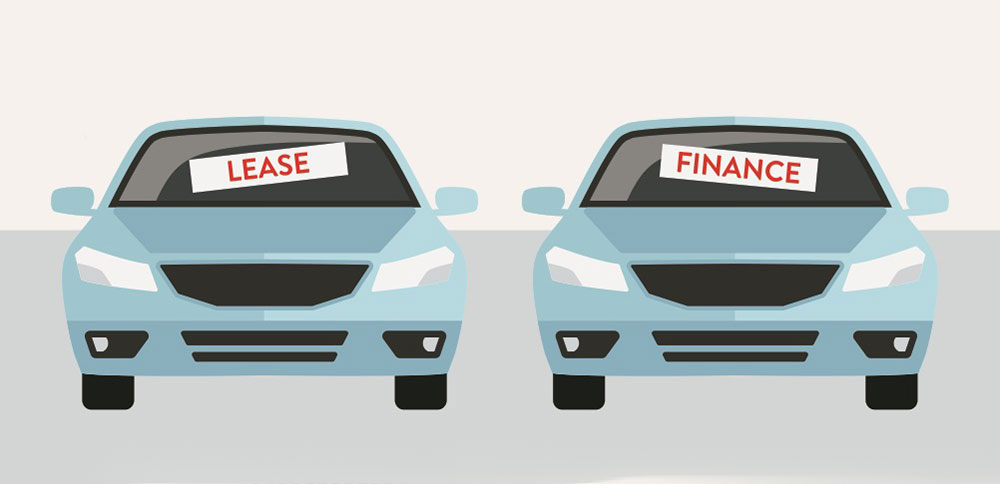

What is the difference between lease and finance?

Lease or Finance a Car in Canada
These are the two main options for someone who doesn’t have enough cash to buy a car on the spot: you can lease or finance a car. Both scenarios involve monthly payments over a set period of time. There is a difference between when you lease and finance a car in Canada or anywhere else. Based on your financial situation and your needs, one option may be more suitable than the other.
Let’s have a detailed comparison of both.
Car Lease vs Finance – Vehicle Ownership
The essential difference between leasing and financing a car is car ownership. When you finance a car, it is like a mortgage on a house. The dealer holds a lien on the car while you make payments. With every payment you make, the car equity builds up, thus bringing you closer to full ownership. Once you pay off the car in full, you keep the vehicle.
Leasing is different. While you make your regular payments, they don’t accumulate towards a full pay-off for the car. It is more like renting the car long-term, at the end of which the vehicle must be returned to the dealer. Often, you can buy the car at the end of the lease period, but the total cost might come out higher than if you financed it in the first place.
Down Payments
The down payment for financing usually includes the down payment itself, which is a portion of a cost you can pay in cash, plus taxes, registration fees, and some possible additional fees.
With a lease, your first payment normally consists of the down payment, first-month payment, refundable security deposit, plus taxes and registration fees. Extra fees are also possible.
Monthly Payments – Equity and Depreciation
When financing, you repay the total value of a car, which builds up your equity, plus you cover the vehicle’s depreciation. The payments are going to be higher than with leasing, but you get to keep the equity.
You never own the car that you lease, so your payments only cover the depreciation of the car but not its total value. Hence, the payments will generally be lower than that of financing, but you don’t get any equity from the car.
Early Termination
Since, with financing, you are repaying the total car value, you can sell the car whenever you want. Whatever money you get from it, you can use it to pay off the rest of the loan or use it any way you like.
Should you choose to end your lease early, you may have to pay early termination fees. This is usually comparable with how much you would have to pay should you stay till the end of the lease term.
Returning the Vehicle
Financing a car implies your ownership of it, so whatever you decide to do with your car is totally up to you. You can keep the car or sell it, but it is now your responsibility.
Leasing a car leaves you worry-free about what happens to the car after the lease period ends. You can pay whatever owing amount you have and just walk away. Alternatively, you can choose to buy this vehicle and keep it.
Modification Restrictions
Financing a car means you own it, so there are no restrictions on what you can do with the car and how you drive it. You are totally free to add any modifications to the car, and any damages the car gets over the financing term are solely your responsibility.
Since you never own the car that you lease, you need to return it in a condition agreed upon with the lease provider. So, if you had any modifications to the car, you’ll have to remove it to bring the vehicle to its original condition. Also, it is your responsibility to pay for any excessive tear and wear, let alone for permanent damage or alterations caused to the vehicle during your lease period.
Distance Restrictions
Being the only owner, you are in no way restricted on how often and how far you can drive. The vehicle’s future resale value is the only thing that may affect your driving habits, and only to your discretion.
With a lease, you are usually bound by an annual mileage limit. So, extra charges may apply if you happen to exceed the limit.
Lease vs Finance a Car in Canada – Pros and Cons of Leasing
Pros
- Lower monthly payments: you don’t pay for the car, but rather for driving it. Under the same budget, leasing can get you a pricier car to drive;
- Warranty: typically, the warranty offered on a lease matches the length of the lease period. As the car ages, its repairs can become costlier. Usually, it can be covered by significant protection of the warranty;
- At the end of the lease period, you can just walk away and not worry about selling your car.
Cons
- Less freedom: you are limited with mileage restrictions as well as with what you can do with the car;
- Regular payments: moving from one lease to another means you will be constantly paying monthly fees;
- Costly ownership: while the total you’ll have to pay over the lease term will be less compared to a financing, the total cost of buying the car after the lease term will be higher.
Conclusion
So, finally, is it better to lease or finance a car? If you are into driving a new car every couple of years, if you keep your vehicles in good condition, and if you drive less than 20,000 kilometers a year, then leasing may be a great option. Especially if you can write it off as your business expense. Otherwise, it usually makes more sense to go with financing. But the final word is yours. And whatever option you choose, CarEvo can help you with that.
Related posts

2024-03-15
Are you considering financing a used car in Canada? It’s a fantastic choice for those seeking an affordable...

0% Interest Car Loans in Canada: Know the Facts Behind Them
Carevo
2024-03-11
Have you ever seen those 0% financing offers in car ads and thought, “Free money, sign me up!”...

How To Negotiate With A Car Dealer When Buying A Car In Canada
Carevo
2024-03-08
Haggling over the price is a standard part of the car-buying process in Canada. And if you do...

The Extra Charges You Might Encounter When Purchasing A New Car In Canada
Carevo
2024-03-06
Let’s be honest: buying a car is a significant financial decision. And when you’re in the market for...
Award-winning, Maritime dealership of new and pre-owned vehicles with several locations across the Maritimes. Best Deals & the best customer service guaranteed.
Copyright © 2023-2025 CarEvo. All rights reserved.




